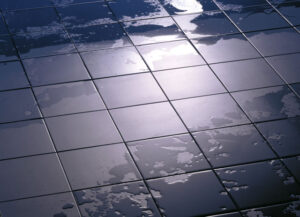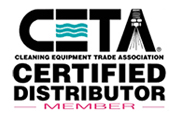
There’s a whole range of equipment you will need to add to your repertoire if you are planning to add water damage clean-up services to your cleaning company’s service offerings. Water damage restoration focuses primarily on cleaning up water, drying out, and mitigating mold growth.
Water Removal Tools
Extraction of as much water as possible is always the first task in any type of water damage restoration. There are two basic types of tools that will cover most situations, from a room with lots of standing water to a home where everything is simply damp.
Extraction Tools
Wet-dry vacuums and industrial grade water extractors are used to pull the excess moisture out of carpets, flooring, and even walls and ceilings. There are also hand-held versions of these that are useful for extracting moisture out of soft furnishings and other smaller items.
Submersible pumps are helpful for basement flood clean-ups, as standing water is very common in basements whether it’s a flood from weather or a burst pipe. Having several pumps on hand that are designed to handle a range of job sizes is ideal.
Drying Equipment
Only so much water can be extracted, the rest will have to be dried out using more conventional methods. Large industrial fans can help dry surfaces much more quickly than small consumer fans, so every water clean-up service needs several on hand or the ability to rent them easily.
Dehumidifiers will pull the moisture out of the air as the fans help evaporate it out of the structure. They are must for jobs in humid climates or in structures with minimal windows or outside ventilation.
Moisture Detection Gauges
Judging whether everything has dried out enough is difficult to do by sight or touch. Moisture meters make short work of the task. They will also help you determine the location of hidden water damage within the walls or floors of a structure.
Non-Penetrative
It’s best to avoid cutting into walls or ripping up carpet to check for moisture whenever possible, especially if you aren’t sure how far the moisture has spread. Handheld thermographic cameras are a good non-penetrative tool that can be used to assess the most likely areas of water presence. They use infrared imaging technology to help you locate damp zones within the walls.
Non-penetrative moisture meters are another necessary tool. These use sensors that are placed against the surface to be tested. The highly sensitive sensors can pick up moisture readings beyond that which can be sensed by sight or touch.
Penetrative
Non-penetrative tools only work as a guide to determine how far moisture damage has spread, they don’t necessarily pick up moisture that is present deep with a wall or floor. Penetrating meters work similar to non-penetrating meters, except the sensors are on spikes, which are called pins, that are inserted deep into the surface. Meters with deeper pins are more effective than those with small pins.
Hydrosensors are similar to the penetrative moisture meters above, but they are designed to be used with softer materials like carpeting. The sensor probes are inserted into the material to determine the extent of water penetration.
Clean-up Equipment
Drying everything out is only one part of water clean-up and remediation. It’s also imperative that every surface in the home is also cleaned so that mold doesn’t take over. Mold spores settle and begin to grow nearly as soon as water damage occurs, so prompt clean-up is the goal of your service.
Mold Removal
Water removal is only one part of the clean-up process — most clients will expect mold mitigation as part of the service. There may be local or state regulations on what can be used to remove mold in residential or commercial buildings. Bleach is commonly used to mitigate surface mold, but there are other options.
Commercial-grade moldicides are also recommended. There are those designed for surface application, as well as those designed to go into equipment like carpet cleaners. Moldicides formulated for use in foggers can also be useful as these can kill spores both on the surface and floating in the air. You will need to rent or buy a fogger into order to use them.
Floor Cleaners
Getting to the mold that settles inside carpets and the underlying pads is one of the greatest challenges of water clean-up. Extensive flooding usually means ripping out and disposing of the carpet, and then cleaning the subfloor to prevent mold.
For small amounts of water damage clean-up, though, the carpet can sometimes be saved. Large commercial cleaners that use the extraction method are preferred for flood situations, as the steam-style cleaners can make damp and mold problems worse.
Of course, these are just basic tools and there are more that you will want to add as your business grows. Contact Ben’s Cleaner Sales to learn more about purchasing or renting the equipment you need to start your business.

